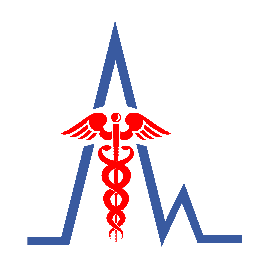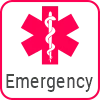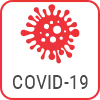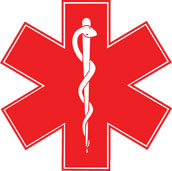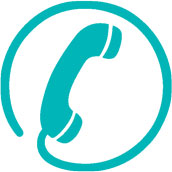Cardiology
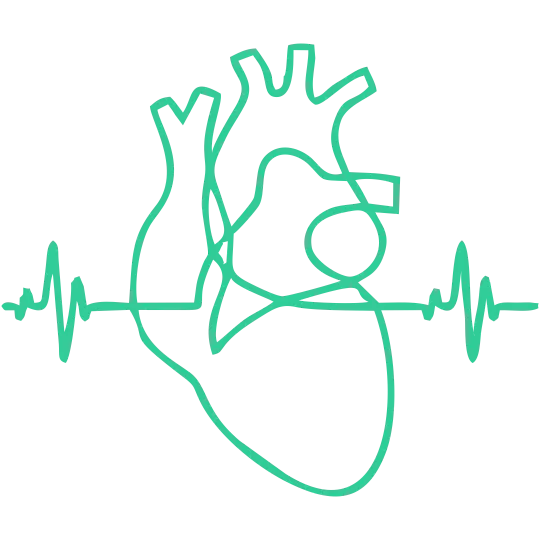
At North City Hospital Cardiologists (heart) and cardiothoracic (heart & chest) surgeons are armed with experience and skills, and supported by a team consisting of trained Medical Officers, skilled technicians and strong nursing care. State Of the art Cathlab, Critical Care Unit and Intensive Care units support our Cardiologists and Post Operative care teams.
Cardiology is a complex field that needs a range of preventive care, screening, advanced diagnostic tests, invasive and non-invasive procedures, post-operative management, cardiac rehabilitation, and a full range of surgical programmes. As one of the leaders in the region for this specialty, our heart patients receive quality treatment from our specialists.
Offering advanced surgical procedures, North City Hospital is committed to provide the most appropriate course of treatment for each patient and ensuring their well-being.
Cardiac Complications
Cardiology Medical procedures
What is a Coronary Angiogram?
Coronary angiography is an invasive test used to study the coronary arteries that supply blood to the heart muscle. The procedure involves the injection of a special dye named as contrast through a catheter (small tube) into the large artery in the groin or the wrist. The catheter is inserted in an artery and threaded through your blood vessels to your heart. The catheter is placed at the openings of the coronary arteries before the dye is injected. Your doctor uses the angiogram to check for blocked or narrowed blood vessels in your heart.
Why do You Need a Coronary Angiogram?
Coronary angiography is an effective way to accurately find any narrowing or blockage in the coronary arteries and other abnormalities that may be present. It allows your doctor to decide the most appropriate treatment for you.
Your doctor may request a coronary angiogram, before your scheduled coronary angioplasty (ballooning) to plan a path to guide the procedure and may also request the test to be done after a coronary bypass surgery (open heart surgery) to check if the grafts are still open.
Is an angiogram painful?
An angiogram typically takes from 45 minutes to one hour. You will lie on a table, awake but mildly sedated. A local anesthetic will be applied to numb an area on your upper leg or on your arm or wrist. This initial needle prick will probably be the only pain you will feel throughout the procedure.
How long do you stay in the hospital after an angiogram?
Four to six hours. If you are having your angiogram done as an outpatient: you will stay in the hospital for four to six hours after the procedure is completed.
Why PTCA is done?
Percutaneous transluminal coronary angioplasty (PTCA) is a minimally invasive procedure to open up blocked coronary arteries, allowing blood to circulate unobstructed to the heart muscle.
How is PTCA done?
Coronary Angioplasty (PTCA/PCI) is a therapeutic procedure to widen blocked, or narrowed, or stenotic coronary artery of the heart diagnosed by Coronary Angiography (CAG). A percutaneous coronary intervention is performed first to open up the blocked arteries.
A balloon is used to stretch the blocked arteries and Drug Eluting STENT (DES) is inserted, if required, into the arteries to hold up the stretching and to get back the normal flow of blood in the arteries. Depending on the gravity of blockages or tightness of lesion, post stenting balloon dilatation may be required to normalize the blood flow in the arteries.
Benefits of PTCA
When successful, PTCA can relieve chest pain of angina, improve the prognosis of patients with unstable angina, and minimize or stop a heart attack without having the patient undergo open heart surgery. The success rate of this procedure is often very high (around 90%) and the risk of complications is very low. Percutaneous transluminal coronary angioplasty is a minimally invasive procedure that does not require the use of general anaesthesia.
In a case of Heart Attack, an Angioplasty can increase the chances of patient surviving more than the clot-busting medications (Thrombolysis). The patient is more likely to go home early and resume normal work. And at the same time Angioplasty reduces the chance of having another heart attack in future.
How much blockage is normal?
A moderate amount of heart blockage is typically that in the 40-70% range, Usually heart blockage in the moderate range does not cause significant limitation to blood flow and so does not cause symptoms. But if symptom persists the physician will make the final decision of each patient’s eligibility for the procedure
Which is better angioplasty or bypass?
The recovery time for angioplasty is much quicker than heart bypass, but angioplasty is not advisable for everyone with CHD. For example, people who have triple-vessel disease are recommended to have heart bypass, and if you have diabetes, heart bypass offers better survival outcomes. If the arteries are not sufficiently widened by angioplasty or the blockages are too severe to be treated by angioplasty, open heart surgery may always be recommended.
What is a Pacemaker?
A Pacemaker is a device that is placed in the chest to control an arrhythmia. It uses electrical pulses to prompt the heart beat at a normal rate. A pacemaker works by sending electrical impulses from the pulse generator to stimulate the heart to contract and produce a heartbeat, thus restoring the heart’s natural rhythm. The wires carry the pulses between the generator and the chambers of the heart.
Components of a Pacemaker
- Battery
- Pulse generator (produces the electrical signals that cause the heart to beat)
- Wires (also called leads) carrying the electrical signals from the pulse generator to the heart
How Pacemaker implantation is done?
When choosing the most appropriate method, the doctor must consider the age, overall health, and lifestyle of the patient. There are two primary methods of pacemaker implantation.
- Endocardial lead placement
- Epicardial lead placement
Endocardial lead placement: The doctor inserts the lead(s) (thin insulated wires) and guides it through a vein to the patient’s heart. Once the lead(s) have reached the heart, the surgeon will then attach the lead tip to the heart muscle, guided to the correct position with the aid of x-ray images.
After this, the doctor will connect the lead(s) to the pacemaker generator and insert the device under the skin through the small incision either on the right or left side of the patient’s upper chest (just below the collarbone). The patient may feel slight pressure while the lead(s) and pulse generator are inserted under the skin. Once the implantation has been completed, the doctor will then check the x-ray images and test the pacemaker to ensure it is in the correct position and that it is working properly to meet the patient’s medical needs.
Epicardial lead placement: An incision is then made in the chest, after which the lead(s) are attached directly to the surface of the heart. The pulse generator is then placed under the skin in the upper abdomen, or may be placed in the upper chest area, although this method is less common.
MICRA implantation
Now we can avoid implantation of conventional pacemakers with the Science Wonder – Leadless & Wireless Pacemaker (MICRA). Though it is a device of High-Cost end, Leadless pacemaker may provide an alternative to traditional pacemakers for the treatment of patients with Cardiac Arrhythmias who require single-chamber ventricular pacing. This is a Trans-catheter Pacing System (TPS), and consists of a self-contained intra-cardiac device including the pacemaker, electronic circuits, battery, and leads.
To bypass the blockage of the coronary arteries, the surgeon makes a small opening just below the blockage in the diseased coronary artery. If a saphenous (leg) vein or radial (arm) artery is used, one end is connected to the coronary artery and the other to the aorta. If a mammary artery is used, one end is connected to the coronary artery while the other remains attached to its origin at left subclavian artery. The graft is sewn into the opening, redirecting the blood flow around this blockage.
The procedure is repeated until all affected coronary arteries are treated. It is common for three or four coronary arteries to be bypassed during surgery.
Before the patient leaves the hospital, the doctor or nurse will explain the specific bypass procedure that was performed.
Heart-Lung Machine
During surgery, the heart-lung bypass machine (called “on-pump” surgery) is used to take over for the heart and lungs, allowing the circulation of blood throughout the rest of the body. The heart’s beating is stopped so the surgeon can perform the bypass procedure on a “still” heart.
Off-pump or beating heart bypass surgery
Off-pump or beating heart bypass surgery allows surgeons to perform surgery on the heart while it is still beating. The heart-lung machine is not used. The surgeon uses advanced operating equipment to stabilize (hold) portions of the heart and bypass the blocked artery in a highly controlled operative environment. Meanwhile, the rest of the heart keeps pumping and circulating blood to the body
Why is it done?
The goals of the procedure are to relieve symptoms of coronary artery disease (including angina), enable the patient to resume a normal lifestyle and to lower the risk of a heart attack or other heart problems.
How dangerous is heart bypass surgery?
The more severe the heart disease, the higher the risk of complications. However, the mortality rate is low, and according to one report, only 2–3 percent of people who undergo heart bypass surgery die as a result of the operation.
Does VSD (Ventricular Septal Defect) always require treatment?
Approximately 75 percent of small VSDs close on their own within the first year of life or by age 10 and do not require any treatment other than careful monitoring. For medium to large VSDs, the spontaneous closure rate is about 5 to 10 percent. If a VSD has not closed by age 10, spontaneous closure probably will generally not occur; it is rare for a VSD in an adult to close on its own.
An adult who has a VSD without any symptoms probably does not require intervention but should have regular checkups by a physician who specializes in adult congenital heart disease.
When should an adult with a VSD seek treatment?
An adult with a VSD who develops symptoms should consult a specialist in adult congenital heart disease. Usually treatment is recommended to prevent heart and lung problems. The treatment for VSD is an operation to patch the hole between the ventricles.
It usually is performed as an open-heart procedure with a chest incision and should be performed by a surgeon who specializes in adult congenital heart defects. The surgeon will close the hole with stitches (a primary repair) or by using a mesh fabric patch (a secondary repair). Eventually, heart tissue grows around and over the patch, absorbing incorporating it into the muscle.
Thoracotomy
A thoracotomy is surgery to open your chest. During this procedure, a surgeon makes an incision in the chest wall between your ribs, usually to operate on your lungs. Through this incision, the surgeon can remove part or all of a lung. Thoracotomy is often done to treat lung cancer.
Pneumonectomy
Pneumonectomy is a surgical procedure that removes the lung in its entirety. It is performed as a treatment for cancer, certain other lung conditions, and trauma. The lungs consist of two large organs within the chest cavity whose main function is to get oxygen into the blood while removing carbon dioxide.
Lobectomy
A lobectomy is a surgery to remove one of the lobes of the lungs. The lungs have sections called lobes. The affected lobe is removed, and the remaining healthy lung tissue can work as normal. A lobectomy is most often done during a surgery called a thoracotomy.
Our team of Experts in Cardiology
| Name | Credentials |
| Prof. (Doctor) RANJAN KR. SHARMA | MBBS. MD. DNB. DIP CARD, DM (CARD) |
| Prof. (Doctor) KAJAL GANGULY | MBBS, MD (MED), DM (CARD) |
| Prof. (Doctor) AMAL K KHAN | MBBS, MD, MNAMS, DM (CARD), FCSI |
| Dr. TANMAY MUKHERJEE | MBBS, MD (MED), DM (CARD) |
| Dr. SHAYMAL CHOWDHURY | MBBS, DIP-CARD, FCCP |
| Dr. PANKAJ SARKAR | MBBS, MD(MED), DM (CARD) |
| Dr. GAUTAM SARKAR | MBBS. MD |
| Dr. SUNANDA ADHIKARY | MBBS, MD, FCCP |
| Dr. SAROJ SONI | MBBS, MD, DPS |
| Dr. AURIOM KAR | MBBS, MD (MED), DM (CARD) |
Facilities for Cardiology
ECG
An ECG records the electrical activity of the heart. The ECG test is painless and harmless. An ECG may be part of a routine physical exam or it may be used as a test for heart disease like Diagnosing poor blood flow to the heart muscle (ischemia) or diagnosing a heart attack. Or evaluate certain abnormalities of your heart, such as an enlarged heart.
Preparation– No Preparation is needed. For details please contact our Cardiology department
Cardiology Machine used – GE MAC 600
TMT
It is also known as an exercise electrocardiogram, it lets your doctor know how your heart responds to being pushed. You’ll walk on a treadmill with the patient connected to an electrocardiogram (ECG).
Preparation – Consult your physician about going off beta blockers for 48 hours and calcium channel blockers 24 hours before your exam. Do not eat or drink for three hours before your appointment. For details please contact our Cardiology department
Cardiology Machine Used – GE Cardiosoft.
Holter Analysis
A Holter monitor is a battery-operated portable device that measures and tape records your heart’s activity (ECG) continuously for 24 to 48 hours or longer depending on the type of monitoring used. The device is the size of a small camera. It has wires with electrodes that attach to your skin.
Preparation – Nothing much preparation is needed. For details please contact our Cardiology department.
Echocardiography & Colour Doppler
An echocardiogram checks how your heart’s chambers and valves are pumping blood through your heart. An echocardiogram uses electrodes to check your heart rhythm and ultrasound technology to see how blood moves through your heart. An echocardiogram can help your doctor diagnose heart conditions.
2-D Doppler Echocardiogram or. An echocardiogram with Colour Doppler measures the speed and direction of the blood flow within the heart. It screens the four valves for leaks and other abnormalities. By assigning color to the direction of blood flow, (Color Flow Mapping), large areas of blood flow may be studied.
Preparation – Nothing much preparation is needed. Though for details please contact our Cardiology department.
Cardiology Machine Used – Philips Affinity 70.
24 Hours Ambulatory BP monitoring
Preparation – Nothing much preparation is needed. For details please contact our Cardiology department.
CARDIAC CT
Coronary computed tomography angiography (CCTA) uses an injection of iodine-containing contrast material and CT scanning to examine the arteries that supply blood to the heart and determine whether they have been narrowed. The images generated during a CT scan can be reformatted to create three-dimensional (3D) images that may be viewed on a monitor, printed on film or by a 3D printer, or transferred to electronic media.
Preparation -This test is done at our diagnostic division. 4-6 hours of empty stomach is needed. Though plain water can be taken. Urea, Creatinine, previous ECG, TMT, ECHOCARDIOGRAPHY, Prescriptions are needed.
Cardiology Machine Used – Siemens Biograph mCTx.
CARDIAC MRI
MRI of the heart lets your doctor see if your heart is damaged from a heart attack, or if there is lack of blood flow to the heart muscle because of narrowed or blocked arteries. MRI of the brain is used to diagnose stroke, aneurysm and other brain abnormalities.
Viability assessment by MRI is a non-stress examination that provides high-resolution detail, including functional assessment of the left ventricle in approximately 30 minutes. Assessment of myocardial viability is performed using 5- to 20-minute delayed, gadolinium-enhanced MRI.
Preparation – This test is done at our diagnostic division. Nothing much preparation is needed. Though for details please contact our MRI department.
Cardiology Machine Used – GE Signa HdXT (1.5T).
CARDIAC PET
Positron emission tomography (PET) viability imaging is used to assess how much heart muscle has been damaged by a heart attack or heart disease. This test is used to determine whether a patient may need angiography, cardiac bypass surgery, heart transplant or other procedures.
Preparation – This test is done at our diagnostic branch .For details please contact our PET department.
Cardiology Machine Used – Siemens Biograph mCTx.
CARDIAC SPECT
Preparation – This test is done at our diagnostic branch .For details please contact our SPECT department.
Machine Used – Siemens Symbia T.
CATH LAB
Cath lab is an examination room in a hospital or clinic with diagnostic imaging equipment used to visualize the arteries of the heart and the chambers of the heart and treat any stenosis or abnormality found.
The Cardiac Catheterization Laboratory, or CATH LAB of North City Hospital is equipped with the highest degree of modern technology which is the best in class for better visualization with the lowest radiation hazards.
Cardiology Machine Used – The Philips FD-10 Allura Clarity System.
IABP or INTRA-AORTIC BALLOON PUMP
IABP, is a long, skinny balloon that controls the flow of blood through your largest blood vessel, the aorta. Your doctor may recommend an IABP if your heart isn’t getting enough blood or isn’t sending enough out to the rest of your body. This condition is called cardiogenic shock.
Cardiology Machine Used – Maquet IABP machine.
Heart Lung Machine
The basic function of Heart Lung machine is to oxygenate the body’s venous supply of blood and then to pump it back into the arterial system. Blood returning to the heart is diverted through the machine before returning it to the arterial circulation.
Some of the more important components of these machines include pumps, oxygenators, temperature regulators, and filters. The heart-lung machine also provides intra-cardiac suction, filtration, and temperature control.
Cardiology Machine Used – Maquet Heart Lung machine.
Hypertension - Cardiology
What is Hypertension?
Hypertension, HTN or HT, also known as high blood pressure (HBP), is a long-term medical condition in Cardiology cases in which the blood pressure in the arteries is persistently elevated. One of the more common treatments in Cardiology, usually hypertension is defined as blood pressure above 140/90, and is considered severe if the pressure is above 180/120.High blood pressure typically does not cause symptoms. Over time, if untreated, it can cause health conditions, such as heart disease and stroke.
Causes of Hypertension
The causes of Hypertension in Cardiology cases are unknown in 95% of patients. In 5% of cases, some specific conditions can be responsible for the high blood pressure, such as kidney disease, atherosclerosis and hormonal imbalance. There are also several risk factors that may increase your chances of developing hypertension including diabetes, obesity as well as a strong family history of the disease.
Symptoms of Hypertension
Hypertension usually does not lead to any symptoms, as found in historic samples of Cardiology but in the long term it can damage various organs and lead to the following:
- Headache and giddiness (in severe cases)
- Heart attack
- Heart failure
- Kidney disease
- Stroke
Treatment of Hypertension
Your doctor in the dept. of Cardiology will evaluate your condition and discuss with you the range of treatment options available. These include a combination of:
- lifestyle changes to improve your general health:
- Eating a healthy diet (limit your intake of salt, cholesterol, and all fat types, and increase fiber intake)
- Exercise regularly
- Limit your alcohol consumption
- Maintain a healthy weight
- Quit smoking
- monitoring of blood pressure at home
- visiting your doctor for regular check-ups to better manage your condition and avoid any potential complications
Antihypertensive medications may also be prescribed, and these need to be taken regularly and permanently.
- Beta-blockers: Beta-blockers make your heart beat slower and with less force. This reduces the amount of blood pumped through your arteries with each beat, which lowers blood pressure. It also blocks certain hormones in your body that can raise your blood pressure.
- Diuretics: High sodium levels and excess fluid in your body can increase blood pressure. Diuretics, also called water pills, help your kidneys remove excess sodium from your body. As the sodium leaves, extra fluid in your bloodstream moves into your urine which helps lower your blood pressure.
- ACE inhibitors: Angiotensin is a chemical that causes blood vessels and artery walls to tighten and narrow. ACE (angiotensin converting enzyme) inhibitors prevent the body from producing as much of this chemical. This helps blood vessels relax and reduces blood pressure.
- Angiotensin II receptor blockers (ARBs): While ACE inhibitors aim to stop the creation of angiotensin, ARBs block angiotensin from binding with receptors. Without the chemical, blood vessels won’t tighten. That helps relax vessels and lower blood pressure.
- Calcium channel blockers: These medications block some of the calcium from entering the cardiac muscles of your heart. This leads to less forceful heartbeats and a lower blood pressure. These medicines also work in the blood vessels, causing them to relax and further lowering blood pressure.
- Alpha-2 agonists: This type of medication changes the nerve impulses that cause blood vessels to tighten. This helps blood vessels to relax, which reduces blood pressure.
Heart Attack (Myocardial Infarction) - Cardiology
One of the most common and important health aspect covered in Cardiology is Heart Attacks. A Heart Attack (medically known as Myocardial Infarction) occurs when the blood flow to the heart is reduced or blocked. This blockage occurs due to the build-up of fatty deposits in the walls of the arteries supplying blood to the heart and results in a poor oxygen supply to the heart muscle. If the blood flow is not restored promptly, the affected heart tissue dies.
Some patients experience chest pains when a heart attack occurs, but others present no symptoms at all. It is crucial to recognise the warning signs of a Heart Attack because it can largely be prevented.
Causes of Myocardial Infarction
The most common cause of a Heart Attack is the narrowing of one or more of the arteries that supply blood to the heart. This results from the build-up of cholesterol deposits in the wall of these arteries (a process known as Atherosclerosis). This restricts blood flow to the heart muscle, compromising the supply of oxygen.
There are modifiable and non-modifiable risk factors associated with a heart attack.
- Modifiable risk factors:
- Life-style factors like smoking, lack of exercise and an unhealthy diet
- Treatable conditions including high blood pressure, high cholesterol and diabetes
- non-modifiable risk factors:
- Age, a strong family history of the disease, ethnicity, gender (men are 3 to 5 times more prone to having a heart attack than women)
- Menopause (loss of natural oestrogen increases a woman’s risk of heart disease)
Symptoms of Myocardial Infarction
The most crucial symptoms to look out for include:
- Tight chest pain; as if a heavy object has been placed on the chest, especially across the middle of the chest, with the pain lasting for more than one minute
- Shooting pain which travels up to the neck, jaw, shoulders, and arms on both sides
- Sweating
- Feeling tired easily / fatigue
- Shortness of breath
- Dizziness
- Fainting
- Rapid heartbeat
Do not ignore these warning signs. If you experience any of these symptoms, see a doctor immediately.
Treatment of Myocardial Infarction
The aim of the treatment is to unblock the affected artery promptly in order to minimize the extent of damage to the heart muscle. Your doctor will evaluate the severity of your condition and perform the most effective way to unblock the artery. This may include:
- A surgical procedure called a Coronary Angioplasty, where is a small balloon or a stent is inserted into the blocked artery to help re-open it and restore blood flow
- Cardiac rehabilitation: A program that aims to help you achieve a healthier heart after your heart attack by attempting to eliminate risk factors
- Medicines:
- Anti-coagulants to dissolve blood clots
- To reduce the risk of another heart attack
- To relieve chest pain
- To control diabetes, high blood pressure and high cholesterol
Complications of Myocardial Infarction
- Arrhythmia, or abnormal heart beat
- Cardiogenic shock
- Damage to the heart valves
Heart failure, resulting in the inability of the heart to pump blood effectively around the body
Heart Arrhythmia - Cardiology
What is a Heart Arrhythmia?
In Cardiology Heart Arrhythmia refers to an irregular heartbeat. Some Arrhythmias have no significant consequences, though other types can be life threatening. The severity of the consequences depends on how long the arrhythmia lasts for, how irregular it is and how it affects blood flow and blood pressure.
Arrhythmias can cause the heart to beat too slowly (below 50 beats per minute), too quickly (greater than 100 beats per minute), or irregularly.
There are different types of Heart Arrhythmias including:
- Premature (extra) beats
- Supraventricular Arrhythmias
- Ventricular Arrhythmias
- Ventricular Fibrillation
- Ventricular Tachycardia
Causes of Heart Arrhythmia:
The risk of developing Heart Arrhythmias increases with age, and the condition can occur in someone with a healthy heart. In some instances the cause may remain unknown. However, the condition is known to be strongly associated with cardiovascular conditions including:
- Coronary artery disease
- Heart failure
- Heart valve diseases
- High blood pressure
- There are also non-heart-related causes that lead to Heart Arrhythmias. These include:
- Overactive thyroid gland
- Stress, excessive consumption of alcohol, tobacco and caffeine, as well as diet pills, decongestants and cough medicines
Symptoms of Heart Arrhythmia: These can include any of the following:
- Chest pain
- Dizziness
- Fainting
- Palpitations (missed beats, fast heartbeat, pounding or fluttering chest sensations)
- Shortness of breath
Treatment of Heart Arrhythmia: Many arrhythmias do not require treatment. Your doctor will evaluate your condition and discuss with you the range of treatment options suitable for you. These may include a combination of:
- Lifestyle changes
- Quit smoking
- Avoid activities that trigger irregular heart beat
- Limit consumption of caffeine
- Avoid stimulants used in cough and cold medications
- Medications
- Anti-arrhythmic drugs to control heart rate
- Anticoagulant therapy (blood thinners) to reduce blood clot formation
- Surgery to try to control arrhythmias and restore a regular heart rate
- Pacemakers, defibrillators, and cardiac implants. These small electrical devises are implanted in the chest and deliver electrical energy by filling in the missing beats and restoring heart function close to normal. These can be temporary or permanent insertions.
- Electrophysical Studies (EP) performed under a local anaesthetic, this procedure allows your doctor to stimulate the heart with controlled electrical pulses, which locate the source of the block or irregular beat.
- Catheter Ablation usually cures arrhythmia and is primarily done post-EP studies and when medication is not effective or is not convenient. The procedure works in two steps.
- Several thin tubes (catheters) with electrodes are inserted into the blood vessels and directed into the heart.
- A burst of radiofrequency energy (the same as microwave heat) ablates (destroys) the area of the heart muscle that is causing the irregular beats
Congestive Heart Failure - Cardiology
What is Congestive Heart Failure?
Congestive heart failure (CHF) is a chronic progressive condition that affects the pumping power of your heart muscles. While often referred to simply as “heart failure,” CHF specifically refers to the stage in which heart muscle is too weak or when another health problem prevents it from circulating blood efficiently.
The most common type of HF is left-sided HF. The left side of the heart must work harder to move the same volume of blood around the body. This may cause a fluid buildup in the lungs and make breathing difficult as it progresses.
These fluids give congestive heart failure its name.
There are two kinds of left-sided HF:
- Systolic heart failure: The left ventricle cannot contract normally, limiting the heart’s pumping ability.
- Diastolic heart failure: The muscle in the left ventricle stiffens. If the muscle cannot relax, the pressure in the ventricle increases, causing symptoms.
Right-sided HF is less common. It occurs when the right ventricle cannot pump blood to the lungs. This can lead to blood backing up in the blood vessels, which may cause fluid retention in the lower legs and arms, abdomen, and other organs.
A person can have left-sided and right-sided HF at the same time. However, HF usually begins on the left side and can affect the right side if a person does not receive effective treatment.
Prevention
Lifestyle strategies can reduce the risk of developing HF and can also slow its progress.
To prevent or slow the progression of HF, people should take the following steps:
- Maintain a healthy body weight: Exercise regularly: 150 minutes of moderate-intensity exercise every week.
- Manage stress: Meditation, therapy, and relaxation techniques can help
- Eat a heart-healthy diet: Daily food intake should be low in trans fats, rich in whole grains, and low in sodium and cholesterol. . However, individuals should check with their doctor what their sodium and fluid intake should be.
- Monitor blood pressure regularly:
- Vaccinations: Be sure to stay on top of vaccinations for influenza and pneumococcal pneumonia.
- Treat and manage risk factors such as hypertension, smoking, alcohol, drugs, diabetes
People who already have HF should take the following steps to prevent further progression:
- avoid alcohol
- limit caffeine and other stimulants
- get adequate rest
- track changes in their symptoms and exercise capacity
- monitor daily weights
- check blood pressure and heart rate at home
Without treatment, HF can be fatal. Even with adequate treatment, HF may get worse over time, triggering dysfunction of other organs throughout the body.
Causes
HF is more likely to occur in people with other conditions or lifestyle factors that weaken the heart.
Risk factors for HF include:
- congenital heart anomalies
- high blood pressure or cholesterol
- obesity
- asthma
- chronic obstructive pulmonary disease (COPD) and coronary heart disease
- cardiovascular conditions, such as valvular heart disease
- heart infection
- reduced kidney function
- a history of heart attacks
- irregular heart rhythms or arrhythmias
- abuse of alcohol or illicit drugs
- smoking
- older age
Symptoms
People with a history of cardiovascular health issues or several risk factors for HF should seek immediate care if they experience symptoms of HF.
The most common symptoms of HF are:
- Shortness of breath or difficulty breathing: People with HF may also struggle to breathe when lying down, with activity or at rest due to fluid accumulation in the lungs.
- A persistent, unexplained cough: Some people experience wheezing and pink, or blood-stained mucus.
- Swelling in the legs, ankles, abdomen, or hands: The swelling may get worse as the day goes on or after exercise.
- Weight gain: Rapid weight gain may be a sign of congestive heart failure.
- Feeling tired: Even well-rested people can experience fatigue.
- Changes in thinking and memory: Electrolyte imbalances due to HF can impair a person’s ability to think clearly.
- Nausea: A reduced appetite can accompany this.
- A rapid heart rate: This occurs because the heart is unable to pump blood with a regular rhythm.
- Light-headedness, dizziness, or passing out: This might also include tingling or numbness in the extremities due to an inadequate blood supply.
Diagnosis
A doctor or cardiologist will perform a physical exam. This involves listening to the heart, checking for fluid retention, and looking at the veins in the neck to see if there is extra fluid present in the heart. They may order other diagnostic tests, including:
- Electrocardiogram: This records the heart’s electrical rhythm.
- Echocardiogram: This is an ultrasound test that can help a doctor determine if a person has a leaky heart valve, a heart muscle that is not squeezing or relaxing properly.
- Stress tests: These tests show how the heart performs under different levels of cardiac stress, such as during exercise. Sometimes, they involve using medications that stimulate the heart to beat faster and harder or cause the blood vessels to relax.
- Blood tests: A doctor may request these to check for infections, assess kidney function, and levels of brain natriuretic peptide (BNP). BNP is a “stretch” hormone that indicates stretching or increased pressure that occurs with HF.
- MRI: This can provide high-resolution images of the heart and can assess for structural changes and scarring.
- Cardiac catheterization: This can help a doctor identify blockages in the arteries, one of the most common causes of HF. A doctor may check blood flow and pressure levels in the ventricles at the same time.
Treatment
Several types of medication can reduce the health impact of heart failure.
Different medications can help symptoms of and prognosis in HF. These include:
- Blood thinners: These reduce the risk of blood clots, which might break loose and travel to the body, heart, lungs, or brain. Blood thinners carry risks, such as increased bleeding.
- Angiotensin receptor-neprilysin inhibitors: These help reduce the risk of mortality and decrease congestion in the heart.
- ACE inhibitors: These relax the blood vessels and help reduce the impact of heart failure.
- Angiotensin receptor blockers: These work to reduce tension in the blood vessels.
- Anti-platelet drugs: Doctors prescribe these to stop blood clots because they prevent platelets in the blood from sticking together.
- Beta-blockers: These drugs lower the heart rate, the force of the heartbeat, and blood pressure, helping to “rest” the heart.
- Sino-atrial node modulators: These can help further reduce the heart rate in people who are already taking beta-blockers.
- Statins: People use these to reduce levels of low-density lipoprotein (LDL), or “bad” cholesterol and increase high-density lipoprotein (HDL), or “good” cholesterol levels.
- Diuretics: These help the body excrete excess fluid in the urine and remove it from the heart and lungs. They also reduce swelling and prevent shortness of breath.
- Vasodilators: These reduce the amount of oxygen that the heart needs to dilate. They can also ease chest pain.
People with advanced HF might need more intensive treatment. Medical procedures that may help include the following:
Implantable devices
People with advanced HF might need more intensive treatment. A surgeon might implant a medical device, such as:
- An implantable defibrillator: These can prevent arrhythmias.
- A pacemaker: These address electrical problems in the heart to help the ventricles contract more regularly.
- Cardiac resynchronization therapy: This helps to regulate heart rhythm and reduce arrhythmia symptoms.
- A left ventricular assist device (LVAD): This supports the pumping ability of a heart when it cannot do this efficiently on its own. People once used LVADs on a short-term basis but can now use them as part of long-term treatment.
Other procedures
A doctor may recommend some other procedures for treating HF, including:
- Percutaneous coronary intervention to open a blocked artery: The doctor may place a stent to help keep the vessel open.
- Coronary artery bypass surgery: This reroutes some of the blood vessels so the blood can travel to supply oxygen to the heart while avoiding diseased or blocked blood vessels.
- Valve replacement or repair surgery: A doctor can replace or repair an inefficient or diseased valve with a mechanical valve or one developed from living tissue.
Heart transplant: This may be the only remaining option if other treatments are not effective.
